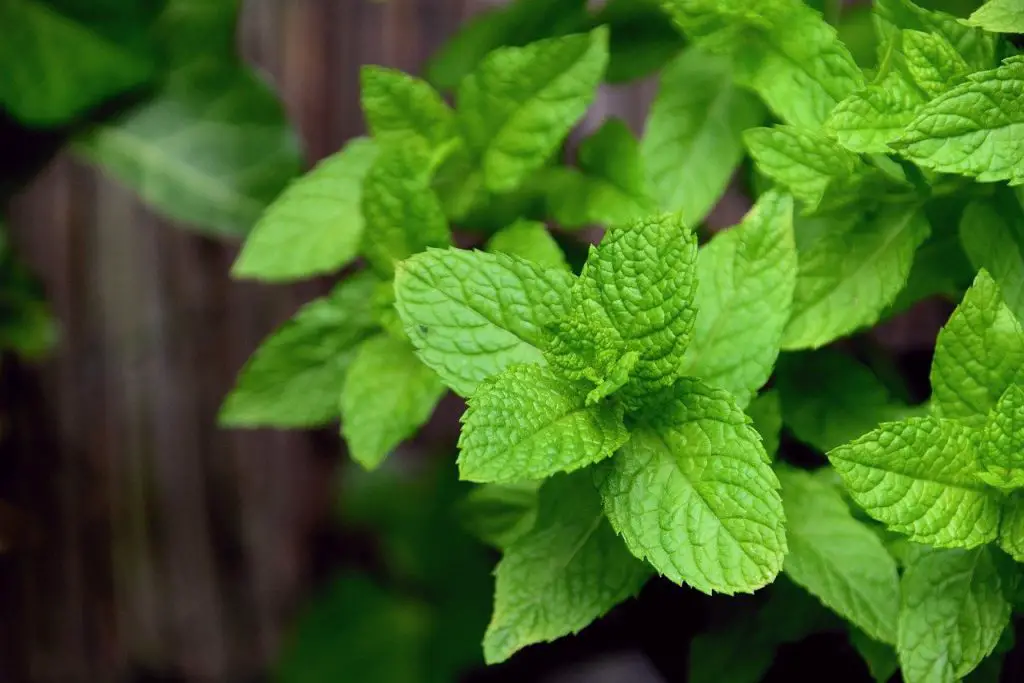The refreshing taste of mint is perfect to spruce up plenty of drinks and desserts year-round. Are you looking forward to having some homegrown mint on hot cocoa or dessert sometime in the winter? You might be wondering if that’s possible. Can mint survive the winter? How do you protect your mint from the cold?
So read on to find out if you’ll be able to have some tasty homegrown mint on all your winter treats.
Can Mint Survive the Winter?
If the question is simply if mint can survive the winter, the short answer is yes. Mint does what is called “dying back” in the winter. Although this may seem like the mint is dead, it is actually just dormant. Like many other plants, it will grow back in the spring, ready to be used again.
Can Mint Survive Outside in the Winter?
Mint does die back if left outside in the winter, but it will survive and the leaves will grow back in the spring. That being said, leaves will not grow on your mint if it is left outside for too long in the winter.
Mint has a high frost tolerance, so it will survive longer than many other plants. However, the leaves will not stay forever, so it’s best not to count on your mint still having leaves if left outside into the late winter months.
How to Help Mint Survive in the Winter
There are a few ways to help you mint plant out in the winter. These things vary depending on where you’re growing your mint, what you mean to do with it, how soon you mean to use it, and other variables as well. Read on to find out what’s right for you and your mint plant.
Moving It Inside
One of the main ways you can keep growing mint in the winter is by moving it inside. Although your mint will survive the cold winter months due to its frost resistance, it won’t grow nearly as well, and eventually will stop growing entirely until the spring rolls around.
There are a few different ways to move your mint herb inside. Firstly you can move it into a sunny window. If it doesn’t get too cold by the window, the mint should be able to grow just fine, taking advantage of the full sun it can receive from the window while still being protected from the cold.
You could also put it on a sun porch or in a greenhouse. Similar to the window, these will allow the mint to continue getting sun while remaining at a temperature that is healthier for the plant to grow. With greenhouses specifically, make sure it doesn’t get too hot! Mint grows most optimally at less than 70 degrees Fahrenheit.
Finally, you can also keep the mint indoors away from a window, and even in a garage. Mint doesn’t need very much sun to survive. It does better in sun than in shade, but it does fine in the shade as well.
You can help your mint even further indoors by putting it in water, which we will discuss further below!
Using a Cloche
Another way you can try to help your mint survive and produce in the winter months is by using a cloche. A cloche is a small covering, usually transparent or translucent, that goes over an herb in the winter in order to protect it from colder temperatures. Older cloches were made from glass, while most modern cloches are a plastic material.
Either type of cloche should work, in theory. Simply place it over the mint plant when it starts getting colder outside. Watch your mint carefully and see if the leaves begin to die back. Remember, mint is frost resistant, to begin with, so this might take a while. Make sure to persistently watch your mint to keep track of its health while the cloche is over it.
Mulching
The reason that plants and herbs like mint struggle to grow in the winter is due to temperature. They are simply not great at growing under cold conditions. So, one would think, the way to combat this is to keep the plant warm. If you think this, you’d be right! However, there are more creative ways to keep a plant warm than just moving them inside.
Covering your bed of mint with a layer of coarse mulch, straw, or shredded wood or bark will allow it to be insulated, and therefore kept warm. Although this might seem counterintuitive, as it would block the herb from sunlight, the mint will actually be able to grow fairly well.
This is for two reasons. Number one, as we’ve already discussed, is that it will keep the mint warm enough to grow, even in the winter months.
Secondly, mint is a plant that, while it thrives in direct sunlight, can also do quite well in the shade. This allows it to continue growing while covered, which is great for the purpose of keeping it alive in the winter! So don’t worry about covering up the leaves a bit with some mulch. Your mint will be just fine.
Place Them In Water
If your mint is indoors, you also have the option of taking it out of the soil and placing it in water. Mint grows very quickly in water. This can help them survive the winter if you take them inside as autumn is coming to a close. Proceed then to put them in water and allowing them to grow for a few weeks.
Likewise, you can take a mint plant that’s gone dormant indoors and jump-start the growth of its leaves by putting it into water. Make sure you do this a couple of weeks before you want to use the mint, however, as it will take a little while to fully grow its leaves back.

Related Articles
- Why Are Your Mint Leaves So Small? (And How To Make Them Bigger?)
- Mint Plant Dying (Why It Happens & What To Do)
- What Is Eating Your Mint Plants? (And How To Stop Them)
- Why Is Your Basil Turning White Or Pale & How To Fix It!
- Why Is Your Basil Plant Wilting & Drooping? (And What To Do)
What Is Mint’s Temperature Tolerance?
Mint does its best growing between 55 degrees Fahrenheit and 70 degrees Fahrenheit. These temperatures are normal for the spring and the autumn. However, mint is quite a formidable herb.
Firstly, mint is frost resistant. This means the plant will not die or die back at first frosts like many other plants and herbs tend to do. However, mint as an herb is extremely well adapted to changing seasons and winter climates. Although you will not be able to harvest it in the winter, it will more than likely survive the colder months.
FAQ’s
If you’re worried about your mint producing leaves or even just surviving the harsh months of December, January, and February, you are not alone! Here are some questions that a lot of plant moms and plant dads have about their mint during the winter months!
How Cold Can Mint Plants Tolerate?
Mint plants can grow until the first frost, so around 32 degrees Fahrenheit. However, as the winter goes on, they will stop growing new leaves. They grow most effectively between 55 and 70 degrees Fahrenheit. Under 50 is sub-optimal, while under freezing makes things very difficult.
Does Mint Need Full Sun?
Mint grows very well in full sun, but it doesn’t need it to survive. Mint can also thrive indoors, in the shade, or on sun porches and in greenhouses. This flexibility allows mint to be a very convenient plant to grow. So the short answer is no, mint doesn’t need full sun. Although, it is nice if you can get it.
Will Mint Grow Back After Winter?
Yes! Although outdoor mint does die back in the winter, it will eventually come back when spring comes around again. Well planted mint should come back every year. If you’re struggling with your mint growing back after winter, try this solution!
Every three years or so (or more frequently if your mint is struggling to grow back or keep its flavor after the winter ends), lift your mint plants out of the ground. Lay new soil, fertilizer, and mulch down, and then plant the mint back in its bed. This should allow the mint to grow well, even after the harshest of winters.
Hopefully, some of your most pressing questions have been answered!
Conclusion
So, as we’ve learned, mint isn’t exactly the greatest plant to grow outdoors in the winter. However, it is not a total lost cause to get some mint harvested in the winter months! Mint’s versatility, flexibility, and toughness as an herb allow it to be grown in many different environments and in very creative ways.
Whether you’re using a cloche, moving your mint plant around to new environments, covering it up, or putting it in water, there is a way that is perfect for you to get some of that delicious, fragrant mint onto your drinks and desserts, even in the middle of a blizzard.
So what are you waiting for? If you want your mint plant to continue growing in the winter, you better jump on one of these solutions now! If you don’t, you won’t have the extra kick of mint to freshen up your hot cocoa by the fire.


